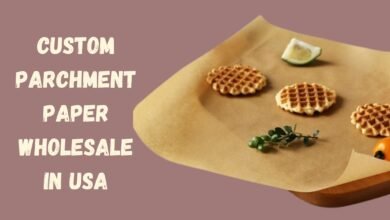
Transform your urban living space into a vibrant bird sanctuary with a window bird feeder. This comprehensive guide covers everything you need to know about window bird feeders. It will help you choose the right type, attract diverse bird species, maintain your feeder for the best birdwatching experience, and solve common challenges associated with urban bird feeding.
Understanding Window Bird Feeders
What Is a Window Bird Feeder?
A window bird feeder is designed to attach directly to your windowpane using suction cups, hooks, or other secure methods. Typically made from durable, clear materials such as acrylic or glass, these feeders allow for close, unobstructed views of birds as they dine.
Types of Window Bird Feeders
Window bird feeders come in several designs, each with unique advantages and ideal uses:
- Platform Feeders: These provide a flat, open area where birds can land and eat. They are easy to refill and clean, attracting larger birds or groups.
- Tube Feeders: Best for small birds, these feeders have multiple feeding ports that prevent larger birds from monopolizing the food supply.
- Hopper Feeders: Featuring a self-refilling container, hopper feeders dispense seeds as needed. They hold more food and are great for a variety of birds.
Benefits of Window Bird Feeders
Installing a window bird feeder provides many benefits:
1. Close-Up Wildlife Observation: These feeders let you observe bird behavior, feeding patterns, and social interactions from just a few inches away.
2. Convenient Birdwatching: They are especially useful for those with limited mobility or access to nature, bringing the joy of birdwatching directly to your living space.
3. Mental Health Benefits: Birdwatching can be incredibly soothing, offering a meditative quality that reduces stress and enhances overall well-being.
4. Educational Opportunities: A window feeder turns your window into a live classroom where both adults and children can learn about ornithology.
5. Support for Urban Bird Populations: In urban areas, where natural resources are often scarce, these feeders provide crucial sustenance during challenging times such as winter or migration.
Choosing the Right Window Bird Feeder
Selecting the ideal feeder involves several considerations:
Durability: Choose materials that withstand environmental elements and resist wear.
Safety: Ensure the feeder’s design minimizes risks to birds, such as preventing collisions with the window.
Ease of Cleaning and Maintenance: Opt for feeders that are simple to disassemble and clean.
Attracting Birds to Your Window Feeder
To attract a diverse range of birds, consider these strategies:
Offer a Variety of Foods: Different species prefer different foods. Include seeds, suet, nuts, and fruits to cater to various dietary preferences.
Provide Fresh Water: Adding a water dish nearby can significantly increase the attractiveness of your feeding station.
Create a Safe Environment: Position the feeder in a spot that is protected from harsh weather and safe from predators.
Maintaining Your Window Bird Feeder
Keeping your feeder clean and well-stocked is crucial:
Regular Cleaning: Wash your feeder weekly with a mild soap solution to prevent disease and keep it inviting.
Check and Refresh Food Regularly: Ensure the food remains fresh and replenish it frequently to keep birds coming back.
Adjust Food According to Seasons: Change the food type based on the season and the specific needs of birds during migration periods.
Troubleshooting Common Issues
Common Problems and Solutions:
Birds Not Visiting: If birds don’t come, try changing the food type or relocating the feeder.
Predators: If predators such as cats are a problem, move the feeder to a higher, more secure location.
Window Collisions: Reduce the risk of birds flying into your window by using decals on the glass.
Enhancing Your Birdwatching Experience
Birdwatching Tips:
Use Identification Tools: Equip yourself with bird guides or apps to enhance your understanding of the species visiting your feeder.
Document Observations: Keep a journal of your birdwatching experiences, noting species, behaviors, and feeding times.
Engage with the Community: Join birdwatching clubs or online forums to share experiences and learn from others.
Conclusion
Window bird feeders offer a unique and rewarding way to enjoy nature from the comfort of your home. They provide educational opportunities, support local wildlife, and serve as a source of relaxation and joy. By choosing the right feeder, maintaining it properly, and using strategies to attract a variety of birds, you can transform your window into a portal to the natural world, enhancing every day with a bit of nature’s beauty.
This extensive guide aims to help urban dwellers and nature enthusiasts maximize their enjoyment of birdwatching through window bird feeders, providing detailed insights into the benefits, setup, and maintenance of these delightful devices.
Transform your urban living space into a vibrant bird sanctuary with a window bird feeder. This comprehensive guide covers everything you need to know about window bird feeders. It will help you choose the right type, attract diverse bird species, maintain your feeder for the best birdwatching experience, and solve common challenges associated with urban bird feeding.
Understanding Window Bird Feeders
What Is a Window Bird Feeder?
A window bird feeder is designed to attach directly to your windowpane using suction cups, hooks, or other secure methods. Typically made from durable, clear materials such as acrylic or glass, these feeders allow for close, unobstructed views of birds as they dine.
Types of Window Bird Feeders
Window bird feeders come in several designs, each with unique advantages and ideal uses:
- Platform Feeders: These provide a flat, open area where birds can land and eat. They are easy to refill and clean, attracting larger birds or groups.
- Tube Feeders: Best for small birds, these feeders have multiple feeding ports that prevent larger birds from monopolizing the food supply.
- Hopper Feeders: Featuring a self-refilling container, hopper feeders dispense seeds as needed. They hold more food and are great for a variety of birds.
Benefits of Window Bird Feeders
Installing a window bird feeder provides many benefits:
1. Close-Up Wildlife Observation: These feeders let you observe bird behavior, feeding patterns, and social interactions from just a few inches away.
2. Convenient Birdwatching: They are especially useful for those with limited mobility or access to nature, bringing the joy of birdwatching directly to your living space.
3. Mental Health Benefits: Birdwatching can be incredibly soothing, offering a meditative quality that reduces stress and enhances overall well-being.
4. Educational Opportunities: A window feeder turns your window into a live classroom where both adults and children can learn about ornithology.
5. Support for Urban Bird Populations: In urban areas, where natural resources are often scarce, these feeders provide crucial sustenance during challenging times such as winter or migration.
Choosing the Right Window Bird Feeder
Selecting the ideal feeder involves several considerations:
Durability: Choose materials that withstand environmental elements and resist wear.
Safety: Ensure the feeder’s design minimizes risks to birds, such as preventing collisions with the window.
Ease of Cleaning and Maintenance: Opt for feeders that are simple to disassemble and clean.
Attracting Birds to Your Window Feeder
To attract a diverse range of birds, consider these strategies:
Offer a Variety of Foods: Different species prefer different foods. Include seeds, suet, nuts, and fruits to cater to various dietary preferences.
Provide Fresh Water: Adding a water dish nearby can significantly increase the attractiveness of your feeding station.
Create a Safe Environment: Position the feeder in a spot that is protected from harsh weather and safe from predators.
Maintaining Your Window Bird Feeder
Keeping your feeder clean and well-stocked is crucial:
Regular Cleaning: Wash your feeder weekly with a mild soap solution to prevent disease and keep it inviting.
Check and Refresh Food Regularly: Ensure the food remains fresh and replenish it frequently to keep birds coming back.
Adjust Food According to Seasons: Change the food type based on the season and the specific needs of birds during migration periods.
Troubleshooting Common Issues
Common Problems and Solutions:
Birds Not Visiting: If birds don’t come, try changing the food type or relocating the feeder.
Predators: If predators such as cats are a problem, move the feeder to a higher, more secure location.
Window Collisions: Reduce the risk of birds flying into your window by using decals on the glass.
Enhancing Your Birdwatching Experience
Birdwatching Tips:
Use Identification Tools: Equip yourself with bird guides or apps to enhance your understanding of the species visiting your feeder.
Document Observations: Keep a journal of your birdwatching experiences, noting species, behaviors, and feeding times.
Engage with the Community: Join birdwatching clubs or online forums to share experiences and learn from others.
Conclusion
Window bird feeders offer a unique and rewarding way to enjoy nature from the comfort of your home. They provide educational opportunities, support local wildlife, and serve as a source of relaxation and joy. By choosing the right feeder, maintaining it properly, and using strategies to attract a variety of birds, you can transform your window into a portal to the natural world, enhancing every day with a bit of nature’s beauty.
This extensive guide aims to help urban dwellers and nature enthusiasts maximize their enjoyment of birdwatching through window bird feeders, providing detailed insights into the benefits, setup, and maintenance of these delightful devices.




